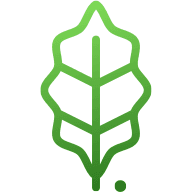3 Effective Ways to Diagnose Tree Disease in Early Stages
Discover the secrets to early tree disease diagnosis with proven strategies from leading arboriculture experts. This article unveils 3 effective methods, including monitoring for subtle changes, inspecting key areas, and leveraging technology. Gain the expertise to identify warning signs and protect your trees with authoritative advice and practical tools.
- Monitor Tree for Subtle Changes
- Inspect Canopy, Trunk, and Root Zone
- Use Technology and Testing Tools
Monitor Tree for Subtle Changes
The most effective way I've found to diagnose a tree disease in its early stages is by closely monitoring the tree for subtle changes in its appearance and behavior. Over the years, I've developed a sharp eye for spotting early warning signs such as discoloration or wilting of leaves, unusual spots or growths, cracking bark, and slowed or uneven growth patterns. These signs are like a language the tree is speaking, telling us something isn't right. One key indicator that's often overlooked is the presence of pests, as many tree diseases are spread by insects. My background as a certified horticulturist and years of practical experience have taught me that catching these issues early is critical because it can prevent the disease from spreading to other trees or becoming too advanced to manage effectively.
One example that comes to mind involved a large elm tree a client was concerned about. At first glance, it looked healthy, but I noticed slight yellowing on the leaf edges and a fine sawdust-like substance at the base of the trunk. Using my knowledge of tree health and experience with local conditions, I quickly identified the signs of Dutch Elm Disease and the presence of bark beetles. Acting swiftly, I coordinated with an arborist to prune the affected areas and implemented a treatment plan to improve the tree's resistance. The tree was saved, and the client was thrilled. This outcome reinforces how important it is to have a trained eye, understand the science behind tree health, and act quickly to ensure the best results.
Inspect Canopy, Trunk, and Root Zone
Diagnosing a tree disease early requires a combination of keen observation, knowledge of tree biology, and experience in recognizing subtle changes. Over the years, I've found that inspecting the overall health of the canopy, trunk, and root zone is critical. Early signs of disease often show up in the leaves such as unusual discoloration, wilting, or spotting, long before other parts of the tree are visibly affected. For example, in oak trees, one of the first signs of oak wilt disease is a subtle browning or "vein-like" pattern on the leaves, which can easily be overlooked without experience. Similarly, fungal infections often leave small cankers on the bark or produce mushroom-like growth near the roots, which are telltale signs of trouble. Regular pruning and tree health assessments have allowed me to catch these signs before the damage becomes severe. My TRAQ certification has been especially valuable in identifying both common and rare diseases quickly and recommending a course of action.
One case that stands out was a homeowner's maple tree in Dallas. The client had noticed a slight thinning in the canopy but wasn't sure it was anything serious. With my experience, I spotted tiny tar-like spots on the leaves, an early indicator of tar spot fungus. Because we caught it early, we were able to prune the infected branches, improve the soil health, and prevent the fungus from spreading. The tree bounced back within a season, and the homeowner avoided costly removal. Diagnosing early is all about knowing what to look for, and my years in the industry have taught me that those small details can make all the difference in saving a tree.

Use Technology and Testing Tools
Early detection is reliant on observation, awareness through weather information, and use of testing tools. First, symptoms occur in leaves-yellowing, drooping, and early leaf loss indicate nutritional, root, and germ-related concerns. Bark changes, including cracks, wounds, and excessive sap, reveal fungal and bacterial disease presence. Conks and fungi, symptoms of a fungal infection, mean decay is probably happening in the tree. Temperature and moisture fluctuations allow for disease, and both water shortages and overflows can sap a tree's protective powers. By tracking them, one can gain forewarnings when symptoms will not yet appear. Emerging technology, such as aerial photos and multispectral analysis, can detect early indications of tree stress invisible to humans. AI-powered technology such as Cropler's agri-camera takes this even a step further, identifying disease, nutritional deficits, and other agronomic ailments in real-time, allowing for proactive intervention by agronomists and farmers before real damage can occur. The state of the soil directly impacts a tree's susceptibility to disease. Malnutrition, extreme pH, and reduced microbial activity are most often accompanied by apparent disease symptoms. Compacted and waterlogged soils can cause fungal infection such as Phytophthora and Armillaria, attacking first in the root and then moving to leaf and branches. Also, disease can result from insect activity. Borers, aphids, and scales allow pathogens an opening to enter. Observing frass, exit wounds, and aberrant sap flow helps differentiate between first and secondary infection. In addition, chemicals in herbicides and in pollution can cause symptoms similar to disease, and therefore, proper diagnosis is critical. Laboratory tests act as a key mechanism for verification. Rapid field tests, in addition to microscopes and DNA testing, can reveal early indications of pathogens, allowing timely interventions to begin. By including predictive modeling with sensor information, weather trends, and past disease events, early warnings can become incredibly effective, instating immediate interventions long before significant loss can occur.



